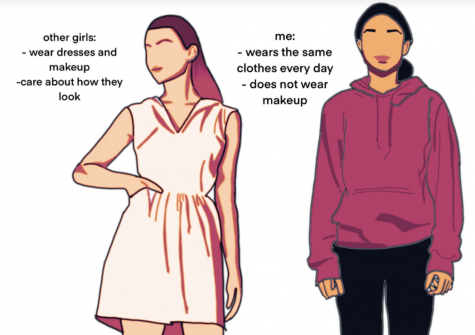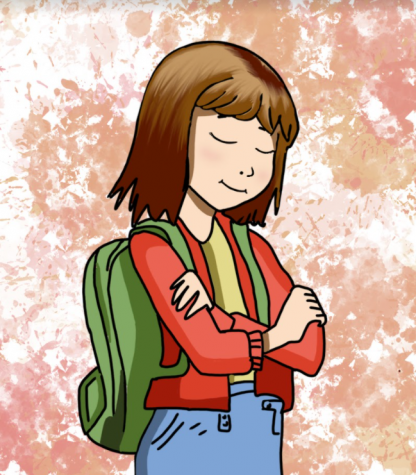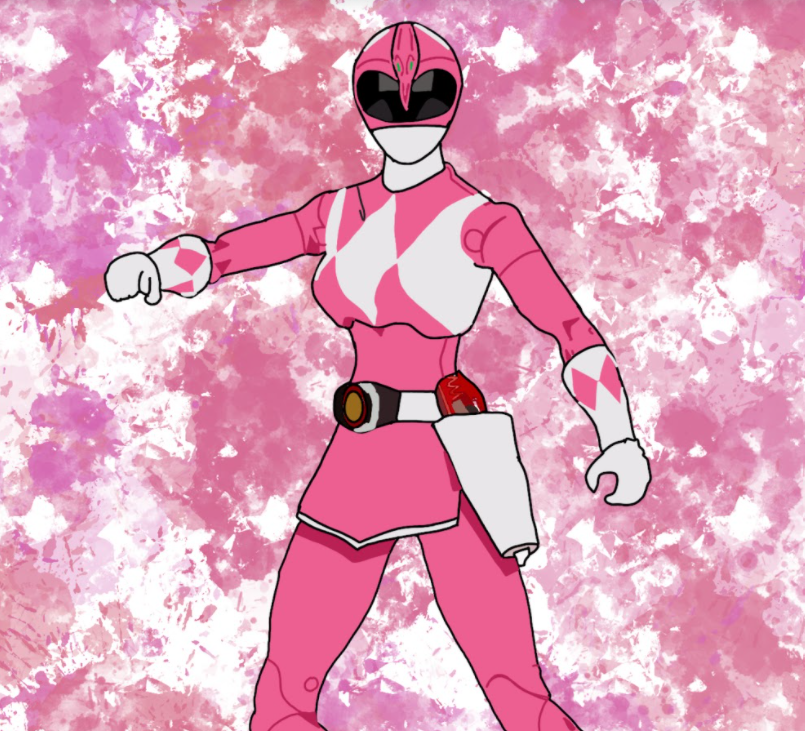“Not like other girls”
Coming to terms with my own internalized misogyny
An illustration of the pink Power Ranger from the children’s television show Mighty Morphin Power Rangers
March 28, 2021
“Who is your favorite Power Ranger?”
As a six year old at the time, this wasn’t something I had really thought about. A friend asked this question as we huddled together on a hot summer day, talking about anything that came to mind — our friends, our parents, books we had read and movies and TV shows we had watched. Once the conversation eventually deviated from gossip about our classmates to Power Rangers, I decided to just listen to the others.
“I like the pink ranger!” a friend said, grinning widely.
“Why?” I said, suddenly feeling the need to butt in. She stared at me, probably confused.
“I don’t like the pink ranger,” I said, tearing grass from the ground to avoid looking at her. “I bet you like her just because she’s pink, right?”
Nobody was paying attention to us in favor of answering the question themselves, so my statement went pretty much unnoticed. We eventually dropped the matter and continued talking about other things, and I forgot about that conversation until just a few weeks ago, almost 10 years after it happened. It was only then that I realized that my seemingly random outburst at the prospect of liking the pink Power Ranger actually had something to do with a larger problem that me and many other young girls have dealt with and continue to deal with — internalized misogyny.
Growing up, I made it clear that I hated things that were considered feminine. This included (but wasn’t limited to) dressing up, princesses, Barbie dolls, the color pink and even having nice handwriting.
When reflecting on how I developed this mindset, I realized that the media I consumed had a lack of diverse female characters — the female characters I grew familiar with were often flat, one-dimensional caricatures. The female characters in books and movies I grew up reading often conformed to the “damsel in distress” trope, in which they lacked independence, were reliant on men and usually had qualities traditionally associated with femininity.
Take Snow White and Sleeping Beauty, for example — beautiful girls who have no freedom in their own stories and need men to save them. Susan Pevensie from “The Chronicles of Narnia” wasn’t allowed into her universe’s heaven because she was too into makeup and partying. Even Hermione Granger from “Harry Potter,” who was intelligent and brave but only because she had a “not like other girls” complex.
Societal norms also contributed to sexist values being preached to me for as long as I can remember. When teachers asked for “two strong boys” to take out the classroom trash bins or relatives said I “talked a lot for a girl,” it just made me more opposed to being feminine. Were girls not strong? Were they supposed to just sit quietly and look pretty? As a headstrong independence-seeking child, I didn’t want to be associated with any of that.
Society and the media led me to believe that women were materialistic and airheaded. In an attempt to dissociate myself from that stereotype, I tried to mold myself into someone who was the opposite of the stereotypical girl. I completely neglected caring about my appearance because I didn’t want to be seen as vain. I made my disdain for the color pink as clear as I could so I’d seem less girly. I even looked down upon people who self identified as feminists because they were “too emotional.”
In actuality, I did care about my appearance. I liked the color pink and I did have the same desire for equality as feminists — I just didn’t want to be associated with the stereotypes that came with it.
I remember the popularization of the “not like other girls” meme format in 2016 and 2017 on websites like Tumblr and Pinterest.

To my immense chagrin now, these are the kind of things I found relatable. This is what I compared myself to. This is what I believed “other girls” were like. Because of the sheer popularity of this meme format which exhibited internalized misogyny at its finest — I know this idea of hating women, or rather how they were always portrayed, is not a unique experience to me.
It is sad that I and so many other young girls thought that we were unique or different simply because we had interests that didn’t conform to a stereotype. How awful is it that society’s portrayal of women is so bad that girls think they’re special for having independent thoughts and interests?
Girls shouldn’t feel obligated to develop qualities that make them stand out just for the sake of defying ridiculous stereotypes. Instead, the casual sexism embedded in our society and the media stereotypes of what women are usually like need to go.
My own mindset didn’t really change until the beginning of high school, which is when I became more exposed to the feminist movement. I had to make a lot of changes to the way I thought, and one of the first changes that I remember making was the conscious decision to stop slut-shaming. As embarrassing as it is to admit, I often looked down on other girls for the way they dressed — real bold coming from someone who wears the same sweatshirt and leggings to class every day, but whatever. I would never vocalize my thoughts, but I looked down upon girls who wore revealing clothing because I considered it inappropriate.
Since society has taught women to be demure, when I saw other girls reclaiming their sexualities, I projected internalized values onto them and slut-shamed them in my mind.
Recognizing that this mentality was a product of misogyny led me to think twice before saying anything about other girls’ appearances. I also became more conscious of other toxic traits in my behavior, like disliking “feminine” women, taking more pride in my “masculine” qualities and adding words like “I’m sorry” and “I could be wrong” or “I don’t know” to handicap my sentences so I’d sound less confident and straightforward.
And I’ll admit, while it may seem trivial to some, making changes in values that were so ingrained in me was difficult. I had to be hyper-aware of everything that I said to make sure that I didn’t say something I’d regret. Of course I misstepped occasionally, but as I worked more to catch my own mistakes, they became less frequent.
I can now proudly say that I am very much like “other girls” because I know that there really is no set of qualities that can be associated with all girls — we are all individual people and should be seen as such.
Maybe if the female characters and representation from my childhood came from the Ramona Quimby Series rather than Snow White, I could’ve caught my mistakes earlier. Luckily, now I know better and can use what I’ve learned to steer clear from these one-dimensional examples of so-called representation.

It is important to reflect on our behaviors now so that we can recognize our own internalized sexism. The first step is to pay attention to what we think and say. If you catch yourself making a disparaging comment about another girl, ask yourself why — is it because you genuinely have a problem with her, or is it because you just don’t like her version of femininity?
As a society, we need to be aware of patriarchal ideals embedded in the values we preach to children so we can avoid having young girls grow up with twisted ideals. Overcoming my own internalized misogyny was a struggle, but I’m happy with my mentality now. I can finally say, with pride, that the pink ranger has always been my favorite.





























